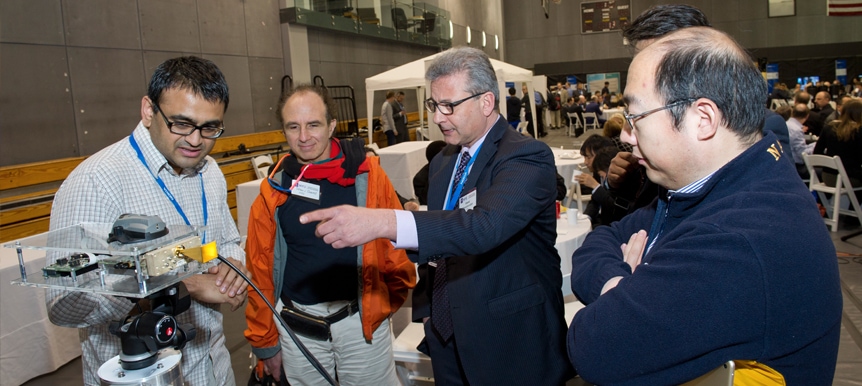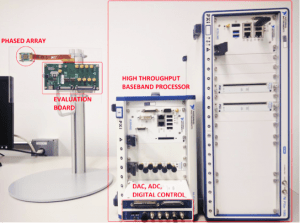NYU WIRELESS wins NSA Grant for Prototyping on mmWave Phased Arrays

As the 5G standardization process gathers momentum, it is increasingly clear that millimeter wave (mmWave) frequencies of above 30GHz will play a critical role in overcoming the spectrum crunch in the traditional 4G bands. In addition to the enormous amounts of spectrum available in these bands, the small wavelengths in mmWave signals enable both the mobiles and base stations to have a large number of antenna elements fabricated with relatively small physical footprints. These electronically steerable phased array antennas enable highly directional transmissions, which have the dual benefit of increasing spatial reuse of spectrum, while also compensating for the higher isotropic path losses in these mmWave bands.

NYU WIRELESS director Dr. Sundeep Rangan and post-doctoral fellow Dr. Aditya Dhananjay have been recently awarded a grant ($112k) from the NSA to prototype techniques enabled by these phased array antenna systems. The scope of the project is to develop and implement adaptive beam-forming algorithms on an experimental prototype system with a phased array operating at 60 GHz carrier. The main target application is known as directional network discovery, which involves both the mobile and base station rapidly scanning various angular directions to discover each other.
“This problem becomes more challenging in mobile environments since mmWave signals are blocked easily. Further, given that the best angular orientations often leverage reflections in non-line-of-sight (NLOS) scenarios, techniques to scan the angular space to rapidly discover one another can be challenging to design”, said Dr. Dhananjay. NYU WIRELESS will deliver a demonstration and code for these algorithms.
The phased array antenna for this prototyping work is made by SiBeam and the baseband hardware is made by National Instruments; both companies are industrial affiliates of NYU WIRELESS. A prior NSF EAGER grant of $100k was used to procure this hardware.

 2025 Brooklyn 6G Summit — November 5-7
2025 Brooklyn 6G Summit — November 5-7 Sundeep Rangan & Team Receive NTIA Award
Sundeep Rangan & Team Receive NTIA Award 2025 Open House
2025 Open House








